
Guests
- Ian InabaCo-founder of Video the Vote, speaking to us from the 866-OUR-VOTE command center in D.C.
Links
Video the Vote is a national network of citizen journalists monitoring the polling stations in their communities. The group has a toll-free number, 1-866-OUR-VOTE, that voters can call to report problems at the polls. A command center in Washington, D.C. can then choose from a database of some 3,000 people to dispatch camera-wielding volunteers to the voting sites. [includes rush transcript]
Transcript
AMY GOODMAN: We turn now to Video the Vote, a national network of citizen journalists monitoring the polling stations in their communities. The group has a toll-free number, 866-OUR-VOTE, as Myrna just said, that voters can call to report problems at the polls. A command center in Washington, D.C. can then choose from a database of some 3,000 people to dispatch camera-wielding volunteers to the voting sites. Throughout the day, the volunteers will be filing reports and posting them on their website, videothevote.org.
An estimated 40 million people have already cast their ballots in early voting. With the record turnout has come long lines, delays at sites across the country.
These are some of the voices of early voters in Ohio, Florida and Colorado.
JAMES, Ohio Voter: We walked for three miles from campus to come down to Vets Memorial to vote. was just going to escort this guy, ’cause it was a nice day, but decided to stand in line, which took six hours, seven hours.
DERRICK, Ohio Voter: Six-and-a-half hours.
JAMES: Six-and-a-half hours.
ST. PETERSBURG VOTER: Early voting site in St. Petersburg. You see the people waiting. Long lines. Somebody even brought out some music.
UNIDENTIFIED: Seven hours, guys. Seven hours.
TANISHA: Seven hours. It’s 10:00 now, and we’re just getting out. And it was just lines, lots of people. Yeah, two kids. Yeah, we’re just making history.
UNIDENTIFIED: First time voting.
UNIDENTIFIED: My boy and I got here right at 2:30. It’s going on 4:30, so we’ve been here two hours.
COLORADO VOTER: I am a little annoyed with the election process and disturbed by how they’re treating new registrants in Colorado.
INTERVIEWER: Did you know they had six polling places two years ago; they only have three this year?
COLORADO VOTER: No, I didn’t. Like I said, I’m new here. I’m from a state where it never counted before, so it’s kind of fun to be in this one. But, yes, I’m not — I’m under-whelmed by the voting process.
OHIO VOTER: I’m from Baltimore, Maryland. We don’t have early voting. I didn’t really know what it was, but I came down just because I saw how, you know, Ohio is a battleground state. I wanted to get my vote out of the way and just to make sure, you know, that I didn’t have to take any time off of work just to — you know, that’s why I came down. But I did not expect to stand in line for seven hours. I really did not.
AMY GOODMAN: That video courtesy of videothevote.org. Ian Inaba is on video stream with us right now. He’s co-founder of Video the Vote.
Welcome to Democracy Now!
IAN INABA: Thank you, Amy.
AMY GOODMAN: It’s great to have you with us. Well, tell us what’s happening on this historic day.
IAN INABA: Well, Video the Vote has 3,000 citizen journalists out in the field today monitoring the polling locations all over the country. We’ve already seen a number of problems, particularly with electronic voting machines breaking down, in particular, Richmond, Virginia, also in northern Virginia. There’s a number of long lines due to the broken-down machines.
We’re also seeing in Philadelphia that there’s a number of broken-down machines, which are resulting in people needing to vote on paper ballots, but there seems to be not enough paper ballots allocated to the polling locations this morning, so people are being told to come back later on in the day.
We’re also seeing a number of places in Florida, both in Hillsborough County and in Pinellas County there of broken-down machines.
So I think that the big story of the morning is that a number of these electronic voting machines are not working properly, and individuals are having to stay in line, wait in line, or even come back later in the day to cast their vote.
AMY GOODMAN: I was on a very long line today, but — and when I went inside, someone had asked for — and I knew they had said it wrong, because one of the election people said, “We need an absentee ballot.” And, of course, it’s too late right now to get an absentee ballot. But they meant there was a problem, and they needed a paper ballot. But with all of these problems, I think it’s important to point out that people are waiting on these long lines.
IAN INABA: Absolutely. I mean, we actually have some video already up on our site from — actually from Pittsburgh, where there were a thousand students waiting in line to vote this morning. And so, I think that what you’re seeing is that people are going to bear it out today and are going to wait in line in order to cast their votes. And I think it’s a very good thing to see people waiting in line as long as they need to.
AMY GOODMAN: Ian Inaba is with us from Washington, the command center of Video the Vote, and we’ll be using some of the video from that website tonight on our five-hour broadcast. Again, you can tune in here at democracynow.org or on your station. Speaking to us from 866-OUR-VOTE, command center in D.C., where you can call, as well, if you have a problem.

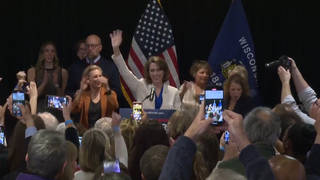
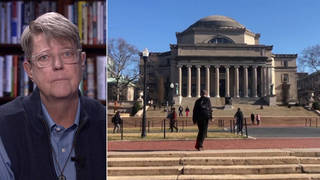
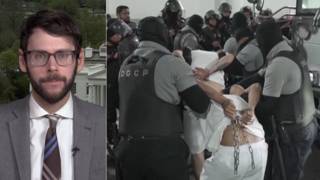
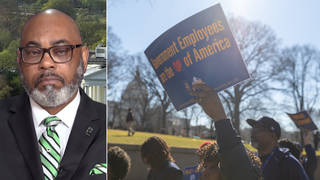





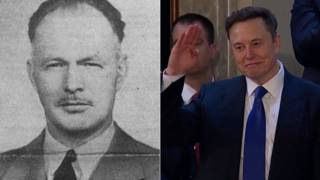
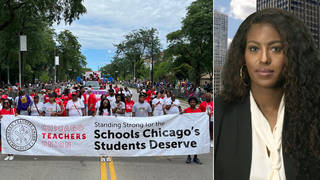
Media Options